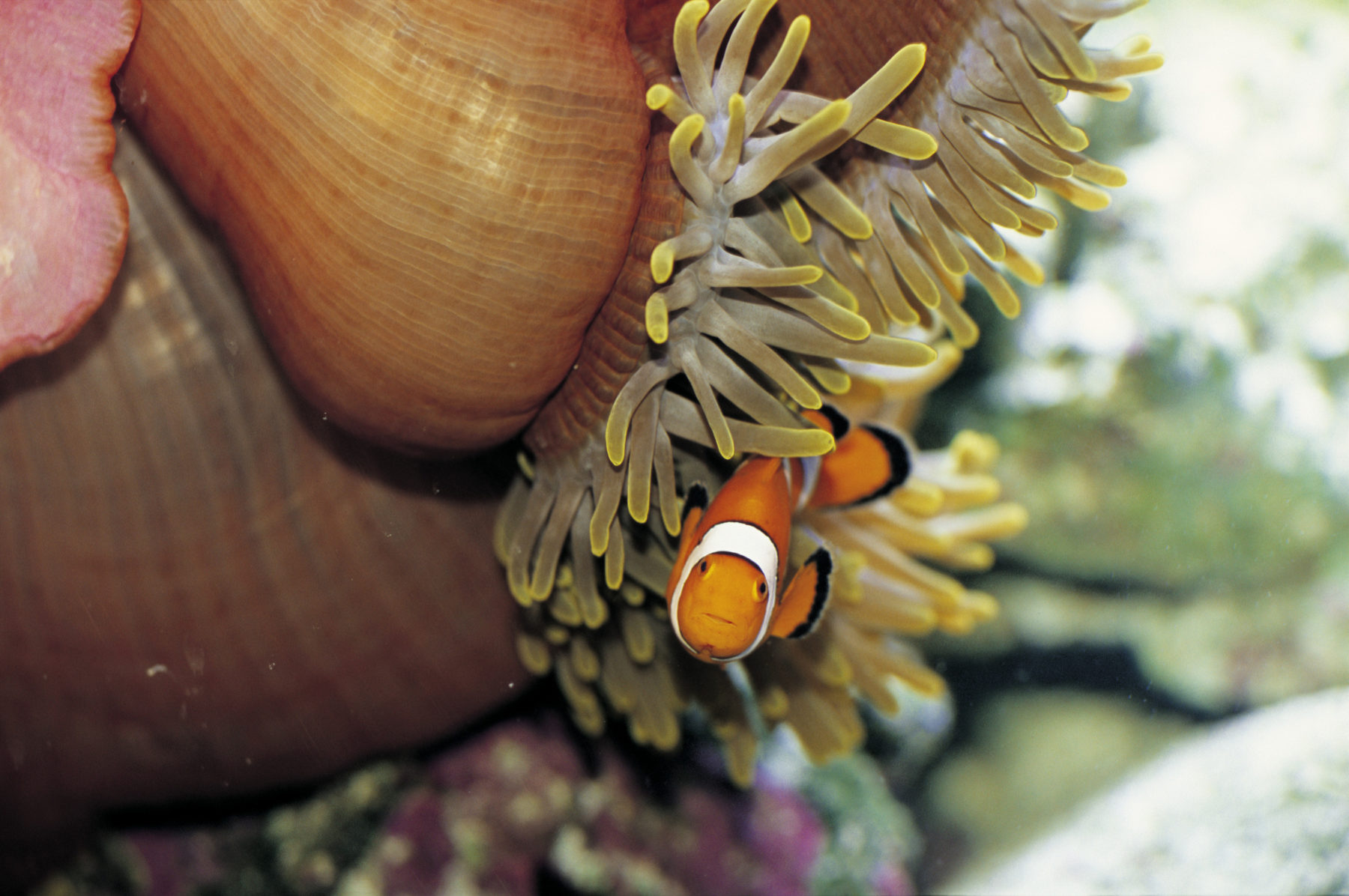A deeper dive on the Great Barrier Reef

Claiming the podium as the world’s largest coral reef ecosystem, the Great Barrier Reef (GBR) is far from subtle. Not in its coral reef diversity – there are about 3000 of them. Nor in its collection of islands. At last count there were more than 1000 continental islands, mangrove islands and sand cays whose proportions rise and fall with each tide. The reef is wantonly boastful when it comes to its diversity of marine life: scientists stopped counting at 9000. Then there are the heroes that claim the limelight, clamouring shamelessly for attention: the Great Eight. All – apart from humpback and dwarf minke whales – from the smallest clownfish to massive Maori wrasse, potato cod and giant clams, along with turtles, whales, sharks and manta rays, are non-migratory and may be spotted year-round. Stretching along most of the Queensland coast into the Coral Sea and covering a landmass the equivalent of
Germany, the reef’s appeal is indisputable.
But how to best explore a World Heritage icon of such magnitude? Make no mistake, while the reef can ostensibly be visited in just one day, you’re doing it (and yourself) a great disservice, for a daytrip out to the reef offers a mere teaser.
Far better to claim a cabin on a multi-day adventure on one of the expedition-style vessels departing from Cairns, Port Douglas or Airlie Beach. Like any self-respecting World Heritage site, the Great Barrier Reef doesn’t give up its treasures readily. Saving its precious jewels for those prepared to venture deep into its coral-clad heart, the GBR’s most diverse ecosystems are those to be found far from shore.

Cruising grounds vary by operator, depending upon your departure point and the number of nights at sea. Some are designed to cater specifically for scuba divers and snorkellers, whether experienced or new to the sport, with multiple dive sites visited each day. Others are more expeditionary in style, highlighting the culture and diversity of the Coral Sea, the reef and its islands. Still others are more about fine food and luxurious accommodation, with the GBR an aquamarine-tinged backdrop to a floating escape from civilisation. The best cruise adventures, of course, combine all of these.
For example, the Ribbon Reefs are favoured by scuba divers and snorkellers. A far-flung string of coral reefs that run along the edge of the Continental Shelf, the Ribbons are to scuba divers what Everest is to mountain climbers. Clinging to the precipice of sea cliffs plunging to unfathomable depths, and where the mainland is nothing more than a hazy shadow on the horizon, dive sites out here are brazenly named and revered by scuba divers for their diversity: those such as the Snake Pit, named for the curious olive sea snakes which are drawn to the reflections on a camera lens, or the Vertical Garden, where undulating soft corals sway gently in the currents, revealing and concealing colourful nudibranchs.

UNINHABITED ISLANDS
Another advantage of a multi-day cruise is the opportunity to spend nights anchored in a calm lagoon or tucked in behind an uninhabited island, where the only sounds you’ll hear are the lapping of waves against the hull, the call of seabirds and where there’s little distinction between a watery horizon and an endless sky. Where the lack of light pollution allows the Milky Way to cut a swathe across the sky and phosphorescence is carried on the flanks of darting dolphins imitating approaching torpedoes.
Out here you’ll visit remote, uninhabited islands, where the only other footprints on the beach besides yours belong to nesting seabirds; the place where female turtles lumber awkwardly ashore to lay their eggs. You might follow in the footsteps of Captain Cook, who famously walked to the summit of Lizard Island, hoping to see a way through the maze of reefs restraining his ship, HMB Endeavour.

Indigenous Australians have also left their mark, with ancient artworks adorning a cave at Nara Inlet on Hook Island. The rock art on Stanley Island in the Flinders Group is internationally significant and exceptionally beautiful. These islands are the sea country of the Yiithuwarra people, whose artworks depict sailing vessels that evoke centuries-old European galleons and Indonesian praus. Offering a window into the world’s oldest continuing culture, other ochre-etched paintings record turtles, dugongs, crocodiles and spotted rays.
Preserved and protected within the GBR Marine Park alongside its countless underwater jewels, ancient treasures such as these, while not easy to reach and rarely seen by human eyes, make a voyage through this timeless seascape absolutely unforgettable.
Find out more at Coral Expeditions.

